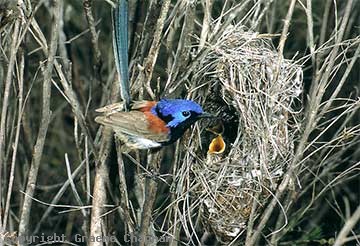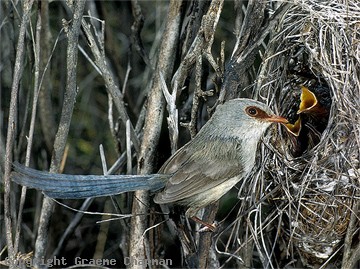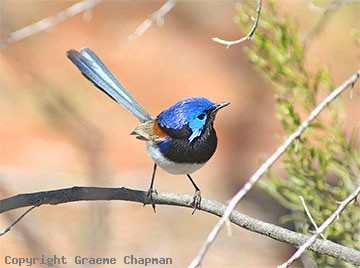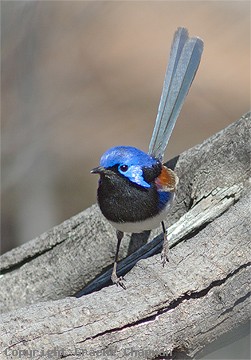
Purple-backed Fairy-wrens are the most widespread of all the fairy-wrens in Australia. There are four subspecies, two from the sandstone escarpments of the tropical north, one on Bernier and Dirk Hartog Islands in W.A., and the the last but not least ranges over most of arid and semi-arid Australia except the east coast where the closely related species lamberti occurs. "lamberti"( the Variegated Fairy-wren) is common in undisturbed bushland around Sydney and Brisbane where it sometimes occurs alongside Superb Fairy-wrens and in NE NSW and SE Qld Red-backed Fairy-wrens as well, making three species all in the one place. Purple-backs just make it down the west coast into the northern suburbs of Perth, but Purple-backed Fairy-wrens don't occur around Adelaide, Melbourne, Darwin or in Tasmania. In fact they are absent from most of Victoria (except the mallee in the NW), the far SW of W.A. (where they are replaced by the very similar Blue-breasted and Red-winged Fairy-wrens), Cape York (replaced there by the Lovely Fairy-wren), most of the Top End of the N.T. and the Nullabor Plain.
In most areas, Purple-backed Fairy-wrens are sedentary and occupy territories in family groups which consist of an adult pair and extra birds, usually the progeny of previous nestings. As many as three coloured male birds have been recorded in a group, but only one of these is the breeding adult male. Subordinate males can be distinguished by a brownish patch in the middle of the blue crown feathers. Studies of banded birds have recorded birds of up to eight years of age.
Purple-backed Fairy-wrens mostly inhabit low, sometimes prickly shrubland where they both feed and nest. They spend less time foraging on the ground than other fairy-wrens. They are shy and retiring in nature - males in particular seem to keep a low profile unless something threatens the nest or young. Their presence is best detected by hearing the distinctive contact call which they utter frequently when foraging (listen on sound page)









